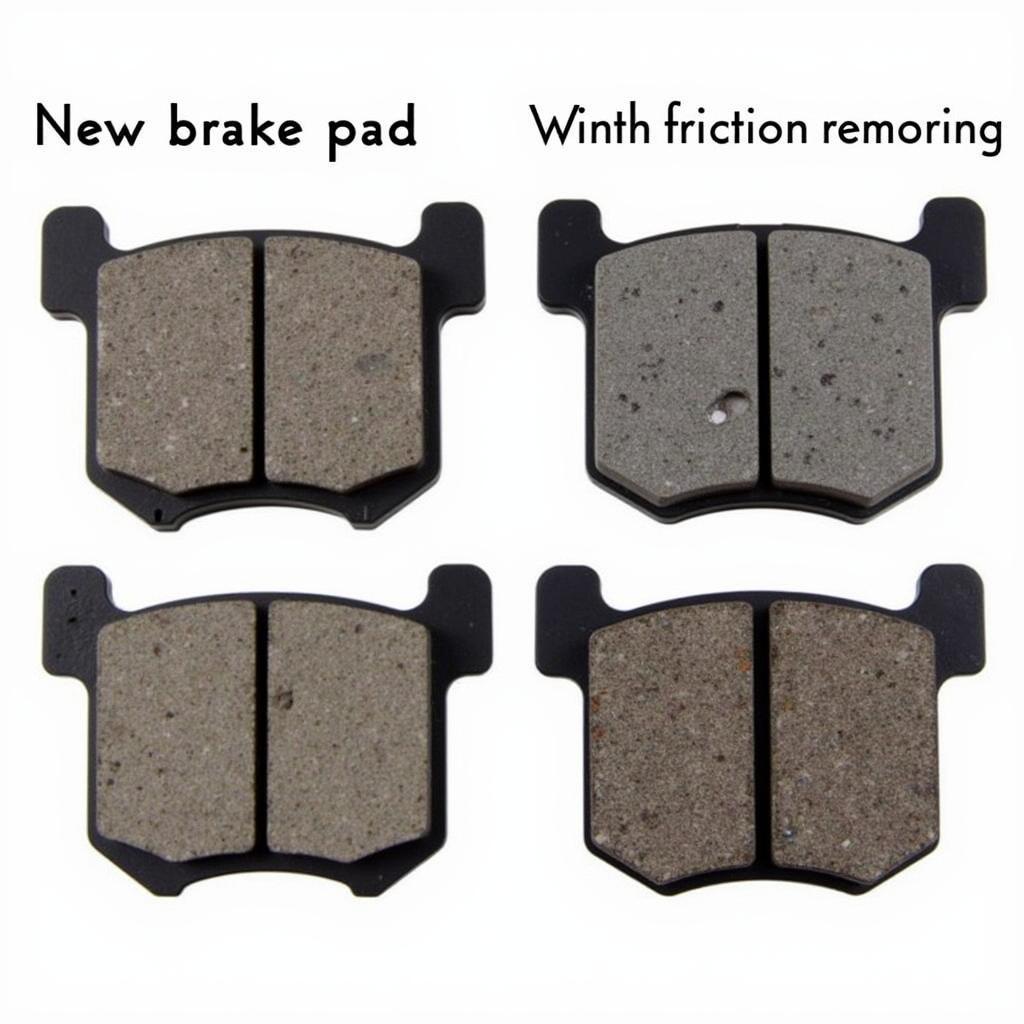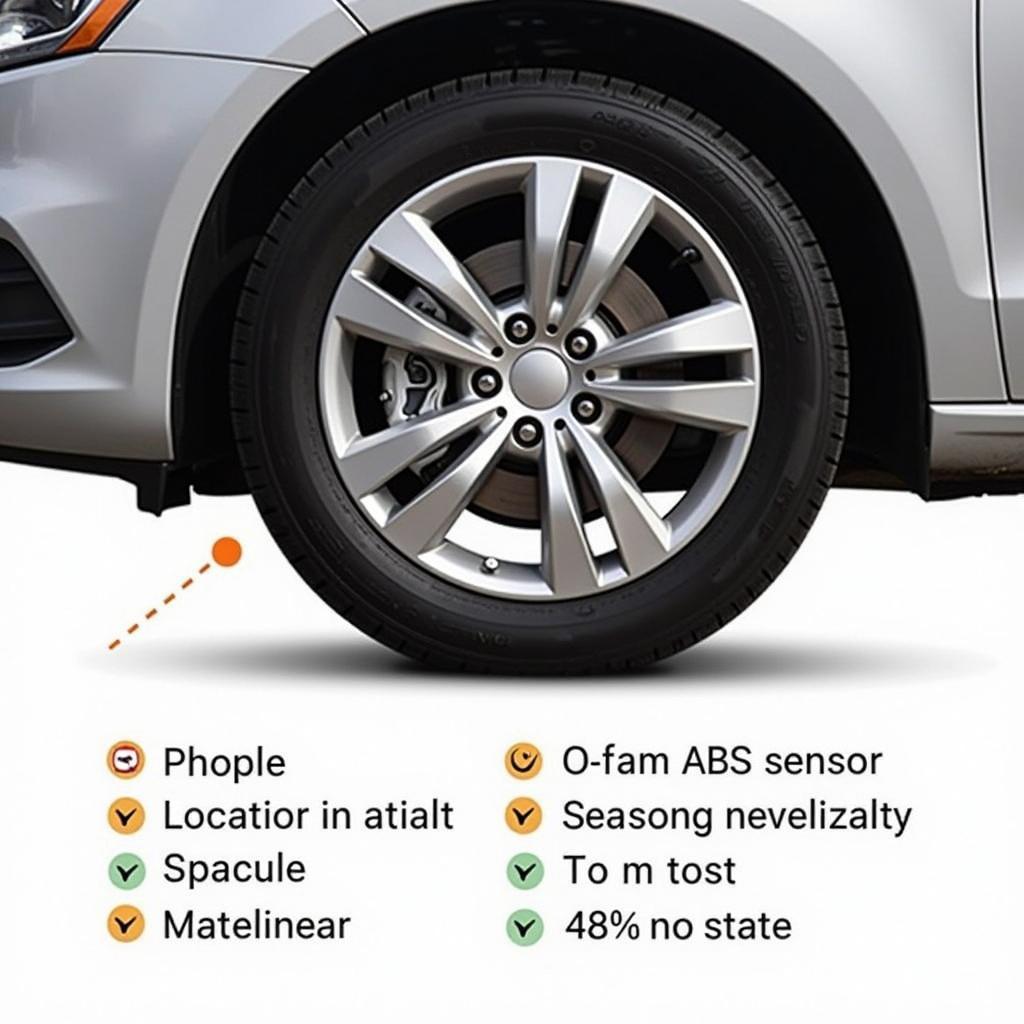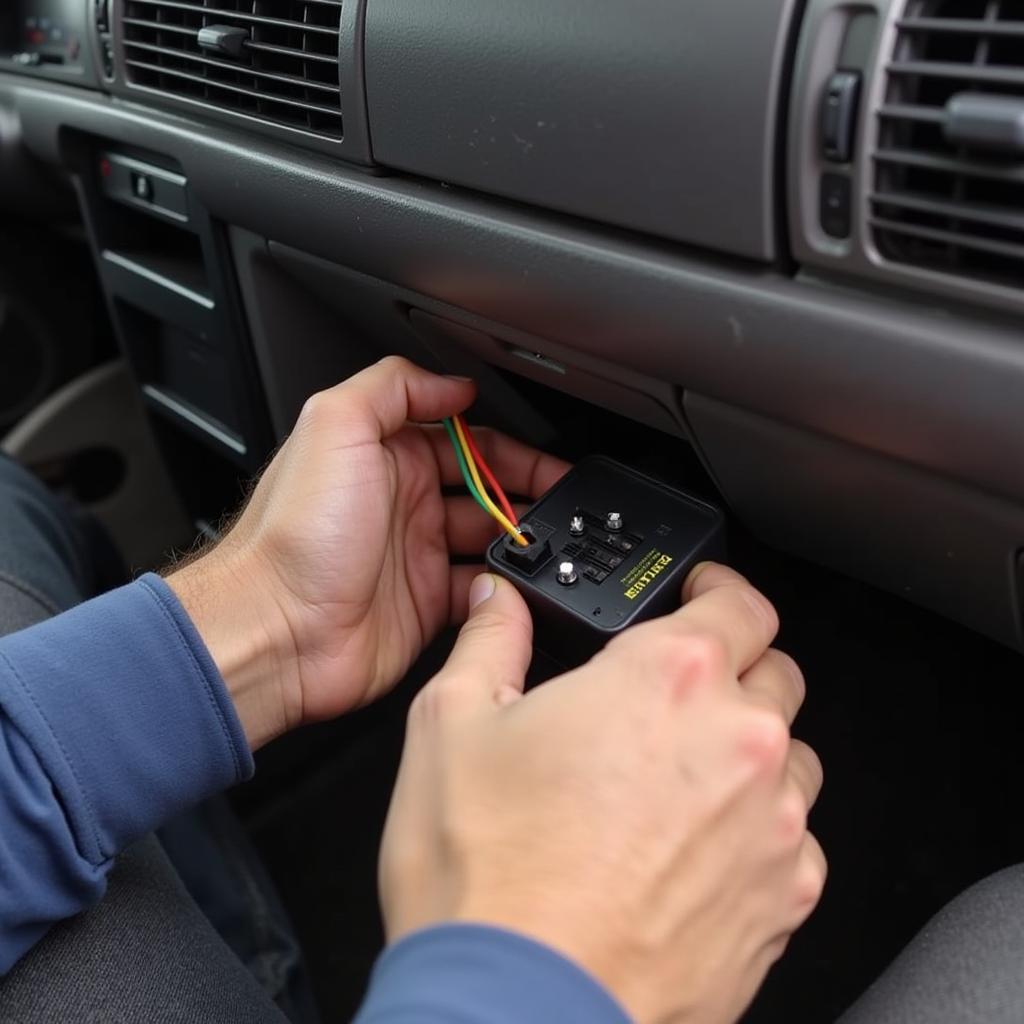The brake light warning light on your dashboard is a crucial safety feature, telling you there’s an issue with your braking system. Ignoring it can lead to dangerous situations on the road. This article will guide you through the common causes of this warning light, how to diagnose the problem, and potential solutions.
Understanding Your Brake System
Your car’s braking system is more than just stopping; it’s a complex network ensuring your safety and control. Understanding the basics can help you grasp the potential issues behind the warning light.
Key Components:
- Brake Pedal: The interface between you and the system, transferring force to the master cylinder.
- Master Cylinder: Converts pedal force into hydraulic pressure, pushing brake fluid through the lines.
- Brake Lines: The network carrying pressurized brake fluid to each wheel.
- Brake Calipers: Housing pistons and brake pads, they squeeze the brake rotors to slow or stop the wheels.
- Brake Rotors: Metal discs connected to the wheels, providing a surface for the brake pads to clamp onto.
Common Reasons for “The Brake Light Warning Means…”
1. Worn Brake Pads
The most common reason for the brake light is worn brake pads. Brake pads have a wear indicator, often a small metal tab, that makes a squealing sound when the pad is thin. If ignored, this can lead to grinding metal on metal, damaging your rotors.
 Worn Brake Pads
Worn Brake Pads
2. Low Brake Fluid
Brake fluid is the lifeblood of your braking system, transmitting the hydraulic pressure that activates your brakes. A leak in the system can cause the fluid level to drop, triggering the warning light.
3. Brake Fluid Leak
Leaking brake fluid is a serious issue. Inspect the area around your car’s wheels for signs of fluid leaks, which might appear as a puddle or wetness on the inside of the tire or behind the brake caliper.
4. Faulty Brake Light Switch
Sometimes the problem isn’t the braking system itself but the switch that activates the brake lights. This switch, usually located near the brake pedal, can wear out over time, causing the brake lights to malfunction and trigger the warning light.
5. ABS Issue
Modern cars often have Anti-lock Braking Systems (ABS), preventing wheel lock-up during hard braking. If the ABS module detects a fault, it can illuminate the brake warning light.
 ABS Sensor
ABS Sensor
Diagnosing the Problem
-
Check Your Brake Fluid: Park on level ground, open the hood, and locate the brake fluid reservoir. Check the fluid level. If it’s below the minimum mark, add the correct type of brake fluid as specified in your car’s owner’s manual. However, simply adding fluid doesn’t solve the problem if there’s a leak.
-
Inspect for Leaks: Carefully examine the area around each wheel, looking for signs of fluid leaks. Look for wetness, drips, or puddles on the ground. Also, inspect the brake lines running underneath your car for any signs of damage or leaks.
-
Listen for Unusual Noises: When applying the brakes, listen for any unusual noises, such as grinding, squealing, or scraping. These sounds can indicate worn brake pads or other issues within the braking system.
“A visual inspection can reveal a lot,” says John Smith, Senior Automotive Engineer at XYZ Auto. “Don’t hesitate to get your hands a little dirty. You might spot a leak or a damaged component that needs immediate attention.”
When to Seek Professional Help
While some brake light warning issues might be straightforward, many require the expertise of a qualified mechanic. If you’re uncomfortable diagnosing the problem yourself or suspect a more complex issue, it’s best to err on the side of caution and seek professional help.
Preventing Future Brake Problems
- Regular Brake Inspections: Most manufacturers recommend having your brakes inspected annually or every 12,000 miles.
- Timely Brake Pad Replacements: Don’t ignore the squealing sound of worn brake pads.
- Quality Brake Fluid: Use the recommended brake fluid for your car and have it flushed and replaced according to the maintenance schedule.
“Maintaining your car’s braking system isn’t just about avoiding costly repairs,” advises Sarah Jones, Lead Mechanic at ABC Auto Services. “It’s about ensuring your safety and the safety of others on the road.”
Conclusion
The brake warning light on your dashboard is a crucial safety indicator. Understanding its meaning and addressing the underlying issue promptly can help you avoid potentially dangerous situations on the road.
Remember, regular maintenance, timely repairs, and a proactive approach to your car’s well-being can go a long way in keeping you safe behind the wheel.
FAQs
Q1: Can I drive with the brake light on?
A: It depends on the underlying cause. If your brake fluid is low or there’s a leak, driving is dangerous. However, if the issue is a faulty sensor, you might be able to drive cautiously to a mechanic.
Q2: How much does it cost to fix a brake light warning?
A: Costs vary depending on the problem. Simple brake pad replacements are less expensive than repairs involving the master cylinder or ABS system.
Q3: Can I check the brake fluid myself?
A: Yes, you can locate the brake fluid reservoir under the hood and check the fluid level.
Q4: How often should I change my brake fluid?
A: Refer to your car’s owner’s manual for specific recommendations. A general guideline is every 2-3 years or as recommended by your mechanic.
Q5: Can I add any brake fluid to my car?
A: No, use only the type of brake fluid specified in your car’s owner’s manual. Using the wrong type can damage your braking system.
Internal Links:
- If you’re experiencing issues with your Fiat 500, check out our article on Fiat 500 brake warning light.
- For Malibu owners, we have a dedicated guide on the brake assist warning light Malibu.
- Concerned about passing your MOT test? Learn more about the brake pad warning light mot 2019.
- If you suspect a fluid leak, read our article on the car brake fluid warning light.
- For Mini Cooper owners, we have a comprehensive guide on the Mini brake pad warning light.

